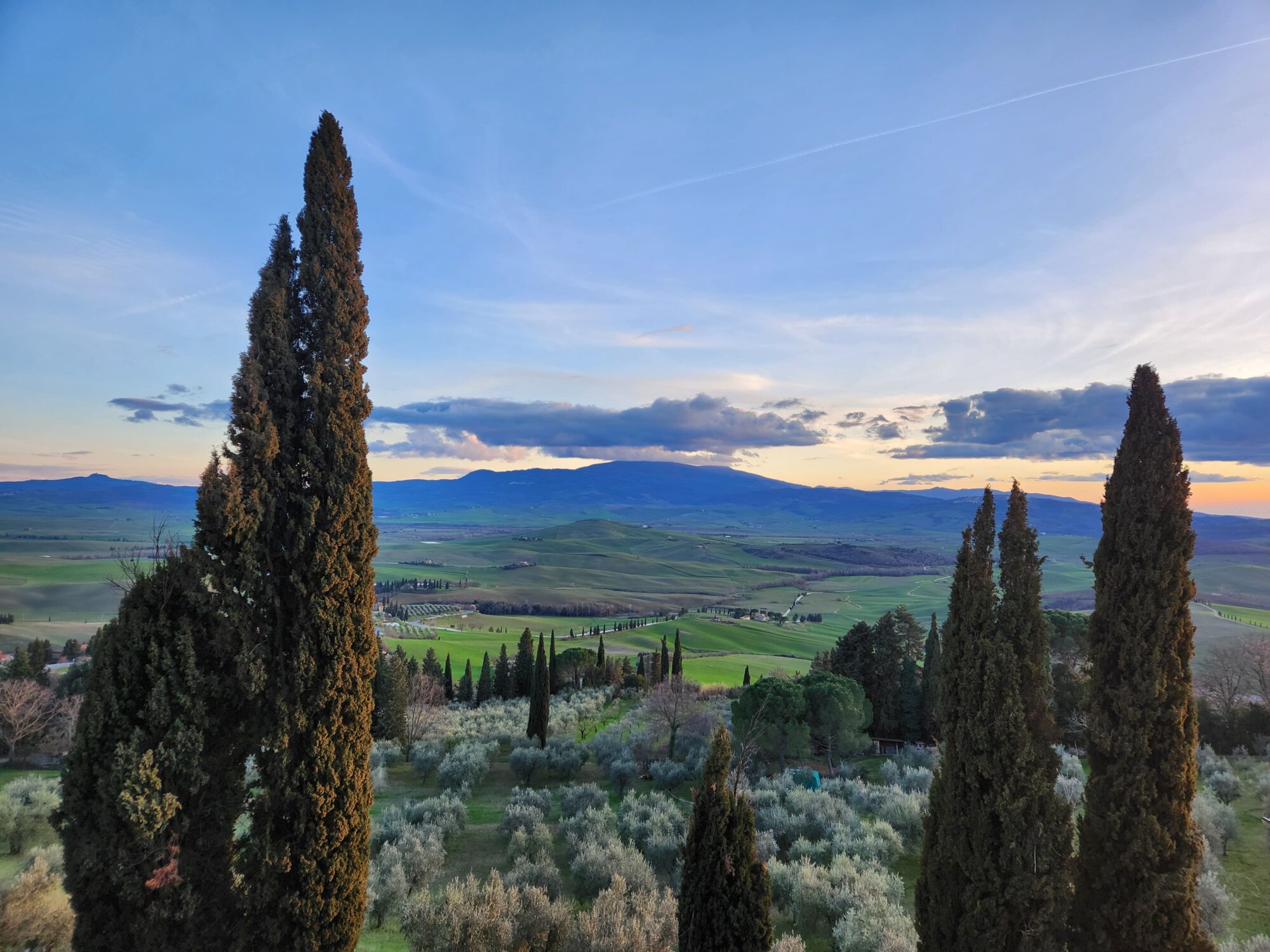Hello everyone! Continuing our tour of the Chianti Region in Tuscany, we’ll now share our itinerary for the 2nd day. After a rather intensive first day that concluded in the outskirts of Siena, we have Montalcino, Pienza, and Montepulciano ahead of us. We’ve decided to save Siena for the last day on our way back home. However, it makes total sense to stop by this magnificent town and spend a day there before heading to the southern part of the Chianti region. Let’s discover what is there to see and the best things to do in the southern part of the Chianti Region. Don’t forget to check out our itinerary for the first day in the Chianti Region!
2nd-day itinerary in Montalcino and Pienza towns of the Chianti Region:
Co-cathedral of Santissimo Salvatore
1. Montalcino
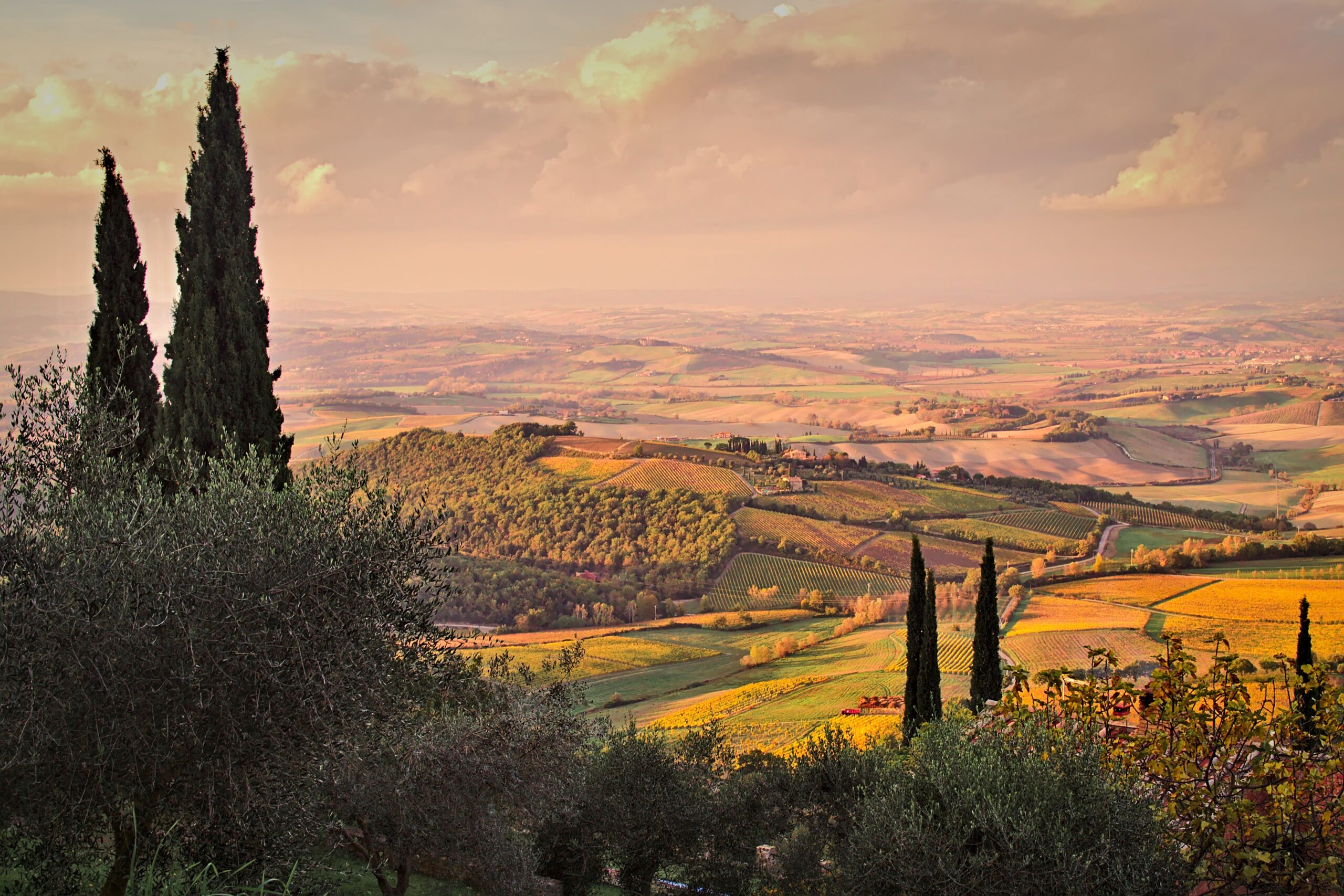
Montalcino, a charming small town nestled in the province of Siena, is renowned for its production of Brunello di Montalcino and Rosso di Montalcino wines. Its hilltop was likely inhabited during Etruscan times, with historical records dating back to December 29, 814, when Emperor Louis the Pious granted the territory to the abbot of the nearby Abbey of Sant’Antimo.
As depicted in the photo above, the panoramic views surrounding Montalcino are truly breathtaking. Now, let’s see what is there to do in Montalcino in a day.

We began our Montalcino tour by exploring the imposing Montalcino Fortress (Fortezza di Montalcino), which dominates the town’s skyline. Constructed in the 14th century, the fortress offers breathtaking panoramic vistas of the surrounding countryside and serves as an excellent photography location. Entry to the fortress courtyard is free. However, if you wish to ascend the fortress walls (highly recommended), a fee of 4€ is required. Within the fortress courtyard, visitors will find a charming wine shop and wine bar Enoteca la Fortezza di Montalcino, where they can sample local wines and purchase a bottle or two to enjoy at home.
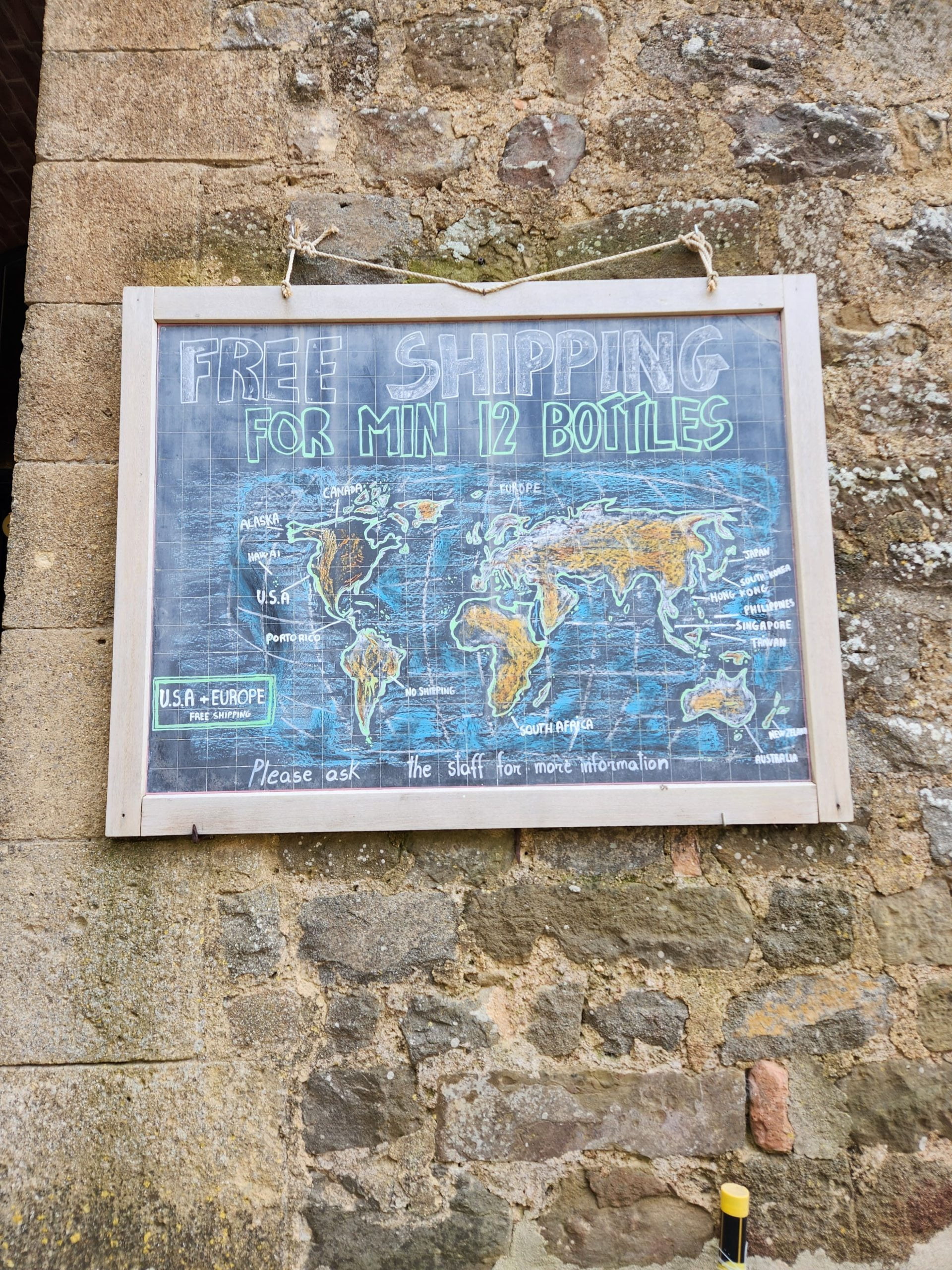
Opening Hours: 9:00 am – 8:00 pm from Monday to Saturday. Closed on Sundays.
Ticket Price: fortress courtyard – free, fortress walls – 4€
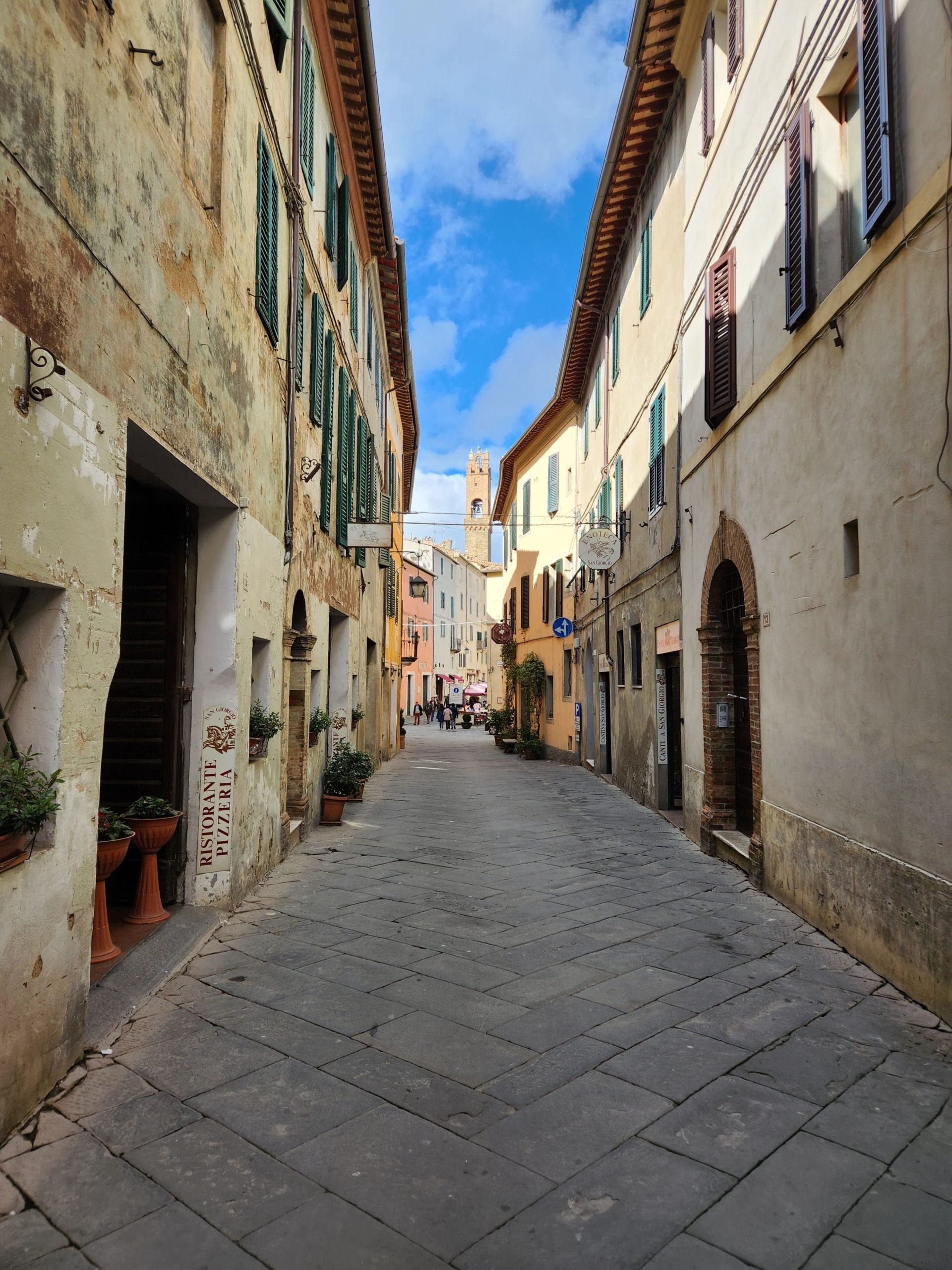
From the Montalcino Fortress, we moved to explore the picturesque historic center of Montalcino, characterized by narrow medieval streets, Renaissance palaces, and ancient churches. The center is just 5 minutes on foot from the fortress. Stroll through Piazza del Popolo, the main square, and admire landmarks such as the Palazzo dei Priori and the Church of Sant’Agostino.
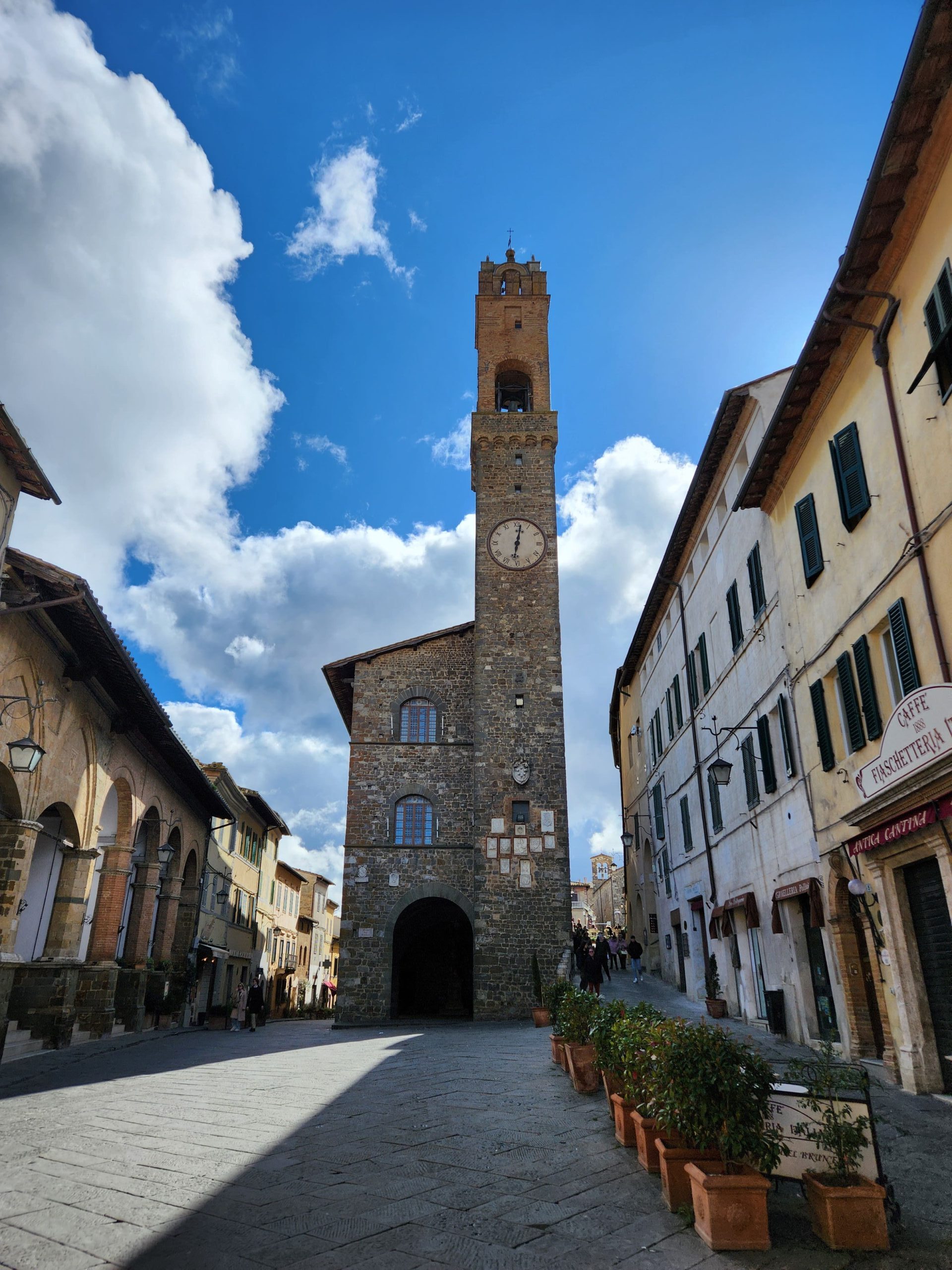
The Palazzo dei Priori, with its clock tower, stands as the emblem of the town. Initially known as the Palazzo del Podestà (Podesta’s Palace) and later as the Palazzo Giustizia (Justice Palace), this historic structure traces its origins back to the 13th century. It underwent significant renovations in the 16th century, during which the loggia and statue of Cosimo I of Medici were incorporated. Before its transformation into the Town Hall in the 19th century, the palace served as the longstanding residence of the Captain of Justice.
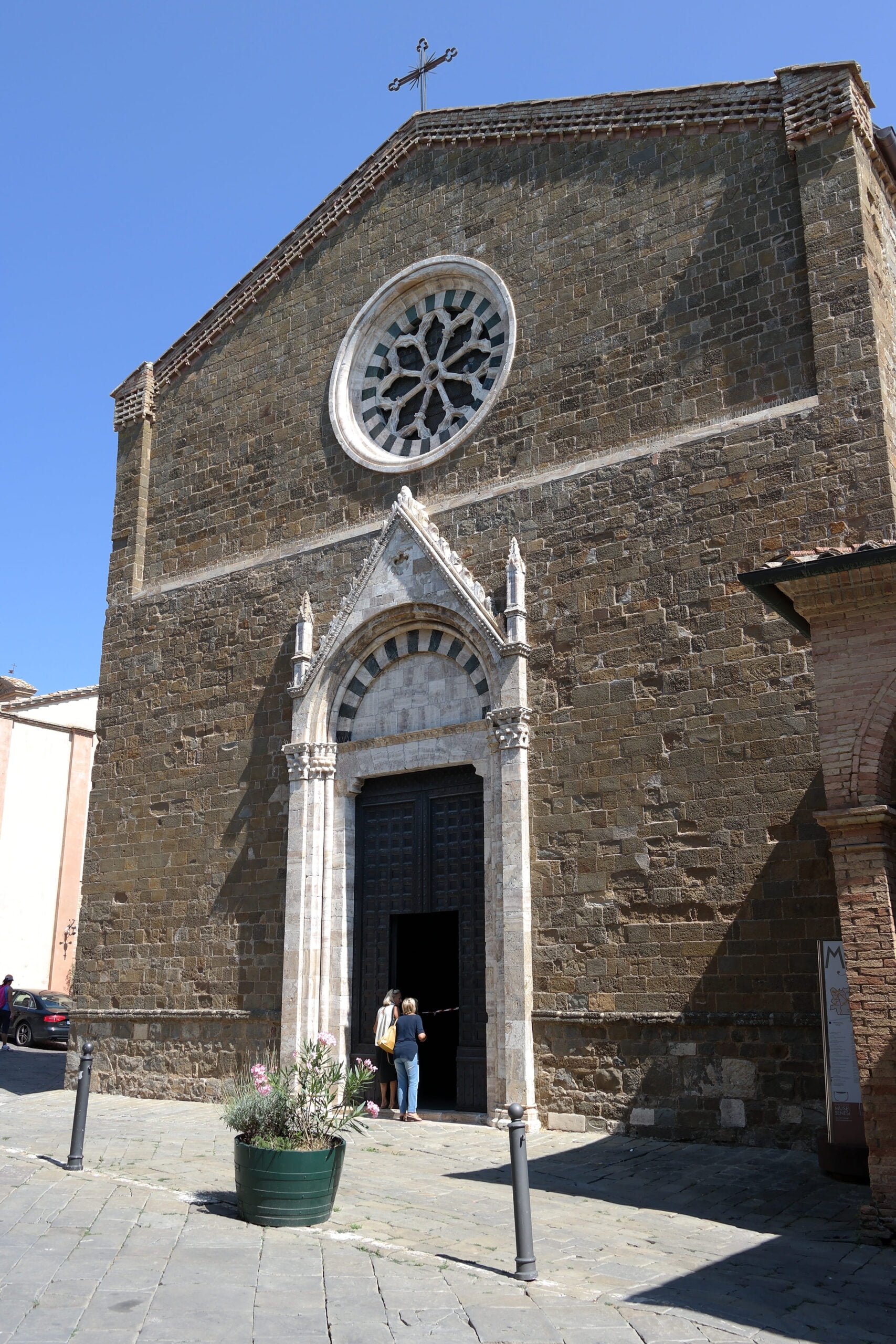
Just a three-minute walk away lies the beautiful Gothic Church of Sant’Agostino. Marvel at its elegant facade and interior, adorned with frescoes by Sienese artists and a 14th-century crucifix attributed to Simone Martini.

In a 5-minute walk, you’ll find another beautiful church: the co-cathedral of Santissimo Salvatore (Concattedrale del Santissimo Salvatore). It serves as the primary Catholic place of worship in Montalcino.
The initial place of worship in Montalcino, dedicated to the Holy Savior, was the Romanesque parish church of the same name, established in the 11th century. It was later elevated to the status of cathedral in the 15th century.
The interior of the co-cathedral is characterized by a neoclassical style. Within the cathedral, there are numerous paintings by Francesco Vanni dating back to the 1680s.
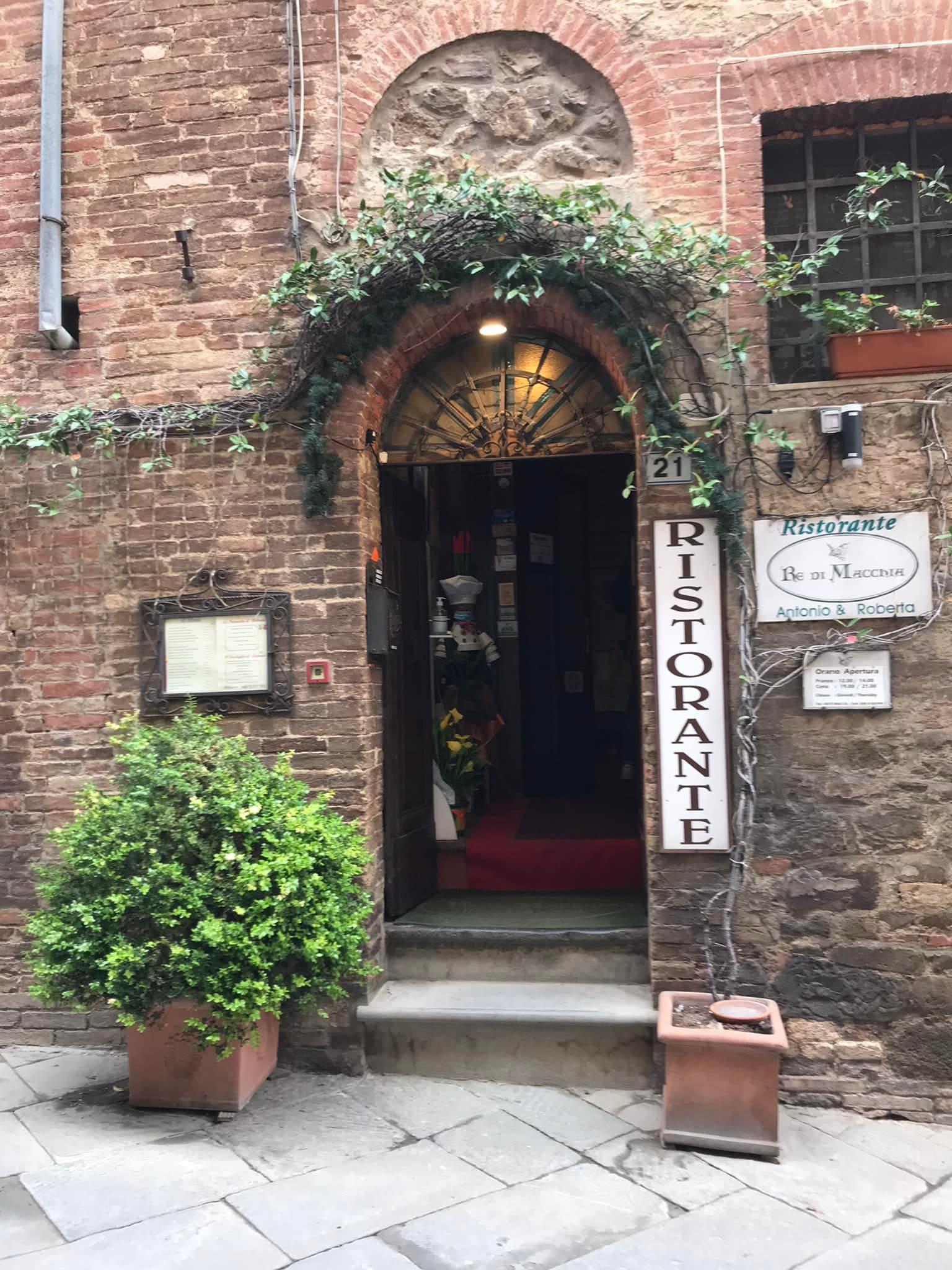
Our final stop in Montalcino is the Restaurant Re di Macchia for a fantastic lunch. Believe me it was the best meal throughout the trip in Chianti Region of Tuscany. Whatever you order here is just delicious. I will personally recommend you to start with a traditional Tuscan appetizer (Antipasto Classico Toscano) and traditional Tuscan pasta with the boar ragu (Pici al Ragu di Chighiale). Enjoy!

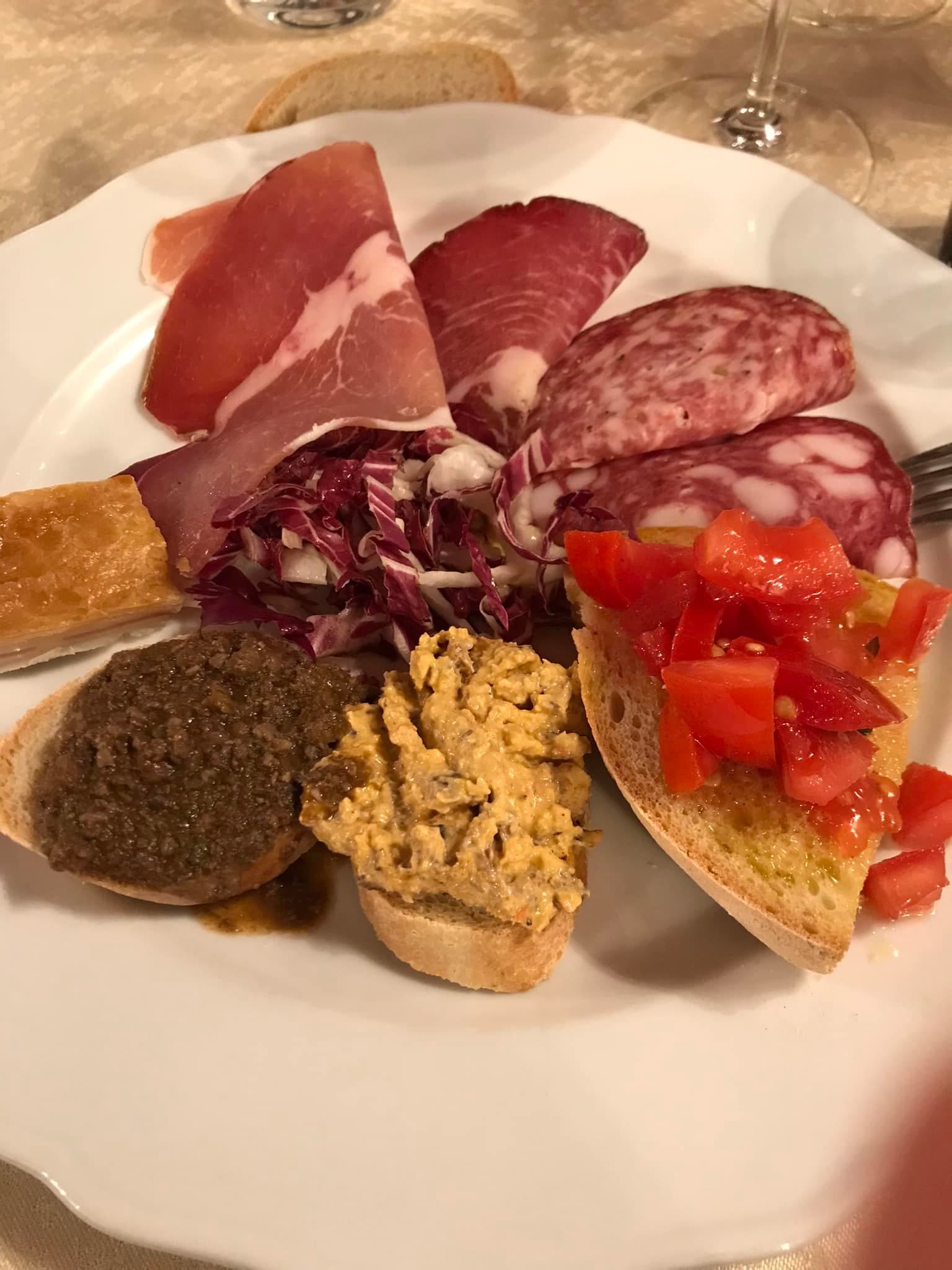
Opening hours: Daily from 12.00pm to 2.00 pm and from 7.00pm to 9.00pm. Closed on Thursdays.
Average spend: 30€ per person
2. Pienza
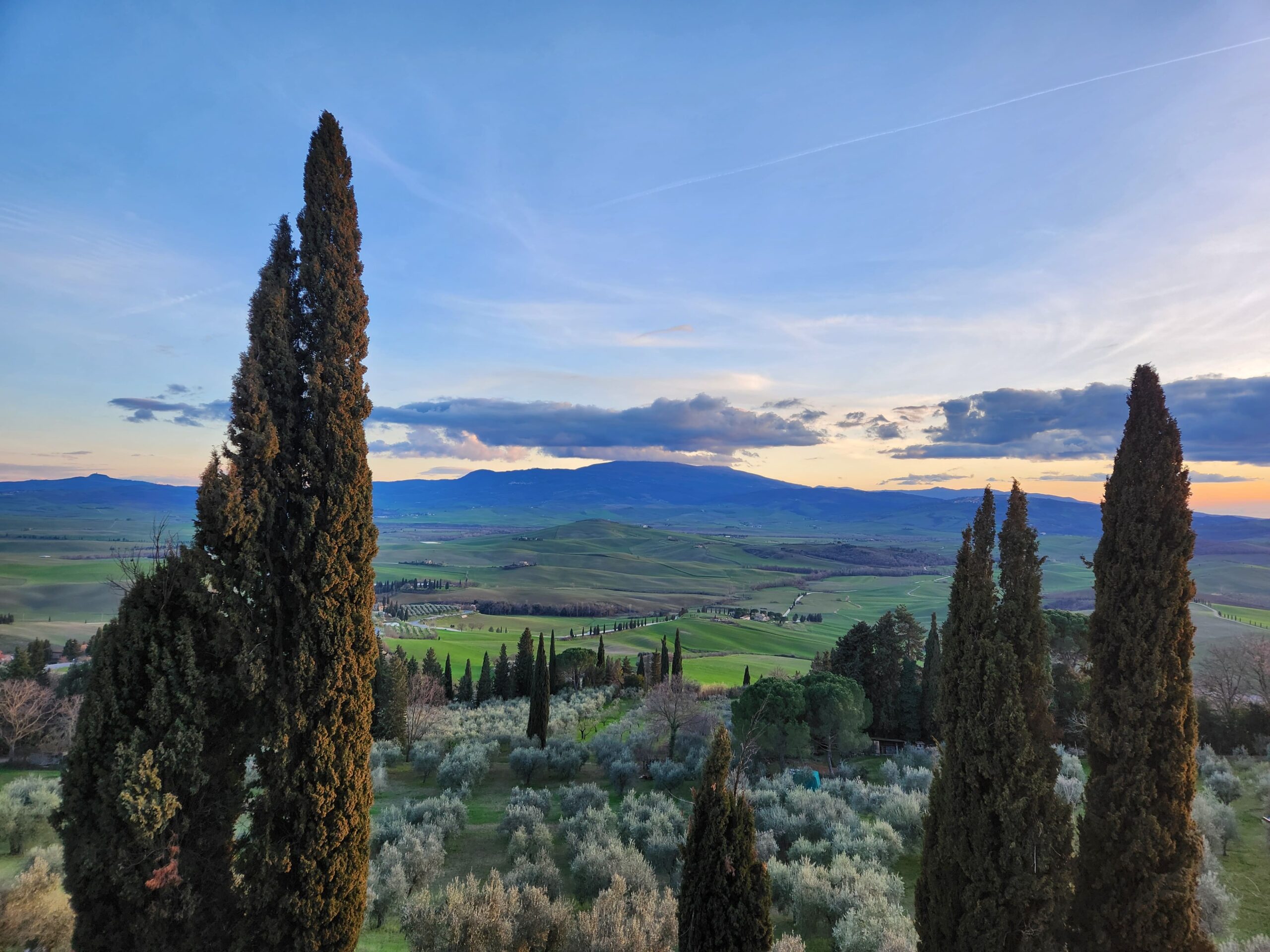
Pienza is a must-visit spot on any trip through the Chianti Region. Here, we enjoyed some of the most stunning views of the Tuscan countryside, which were absolutely breathtaking.
Pienza is renowned as the quintessential city of the Renaissance, established under the patronage of Pope Pius II, a native of the area born to noble parents from Siena.
Designated as a UNESCO World Heritage Site in 1996, Pienza stands as a remarkable testament to Renaissance urban planning principles. Pienza holds its recognition as a site of profound universal significance, not solely for its pioneering urban design rooted in humanist ideals of its era, but also for serving as a model of the “ideal Renaissance city,” influencing urban developments in Italy and beyond.
With its charming architecture, enchanting ambiance, and breathtaking panoramic vistas, Pienza has become a cherished destination for painters, artists, photographers, and filmmakers; Franco Zeffirelli drew inspiration from its allure for his film adaptation of Romeo and Juliet.
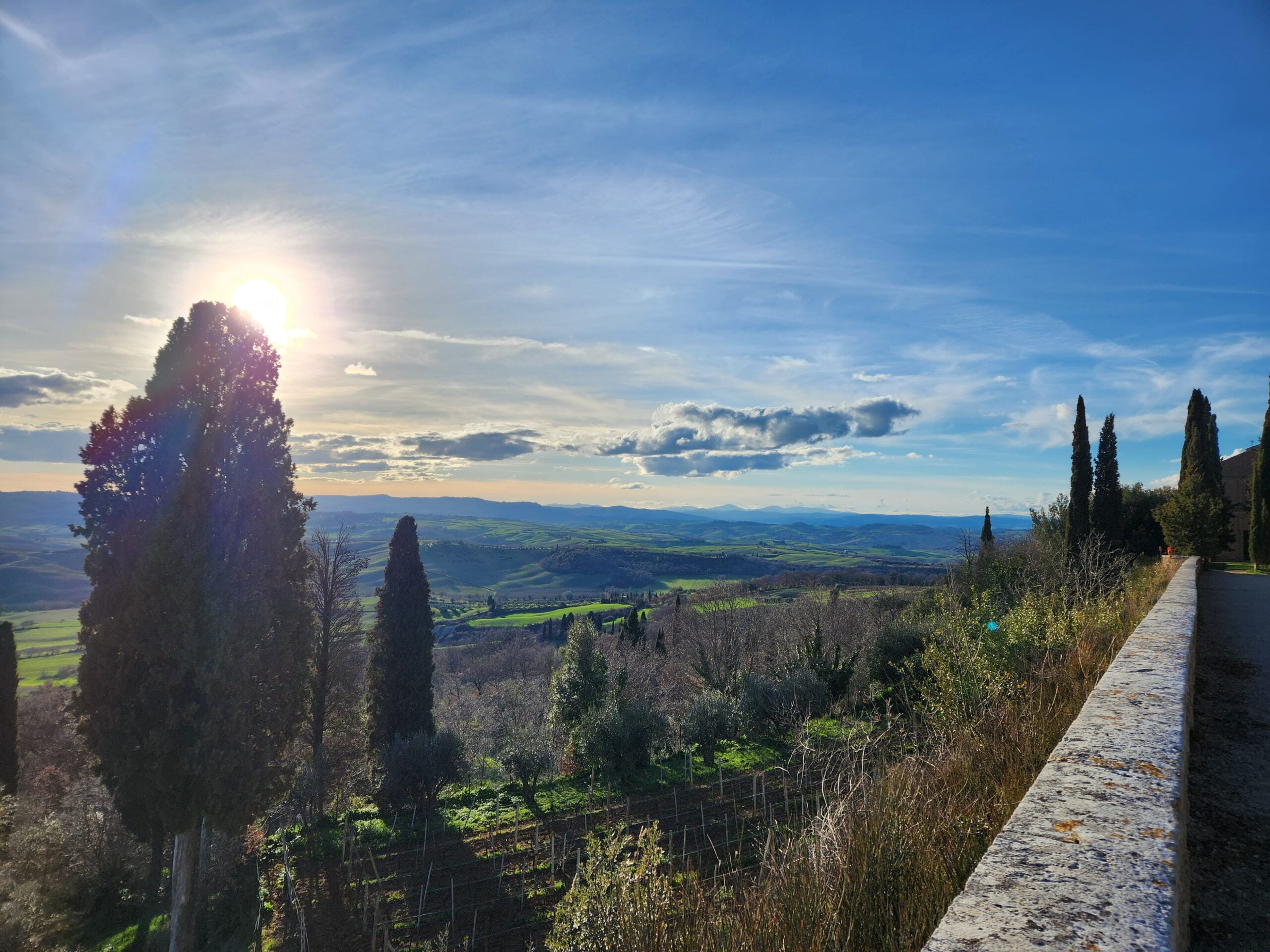
The ideal way to experience Pienza is to park your car for free at the town entrance, on via degli Ulivi, and walk along the town walls. From there, you will enjoy amazing panoramic views of the Val d’Orcia countryside while heading towards the historical center. The Val d’Orcia landscape is a UNESCO World Heritage Site celebrated for its natural beauty and cultural importance.
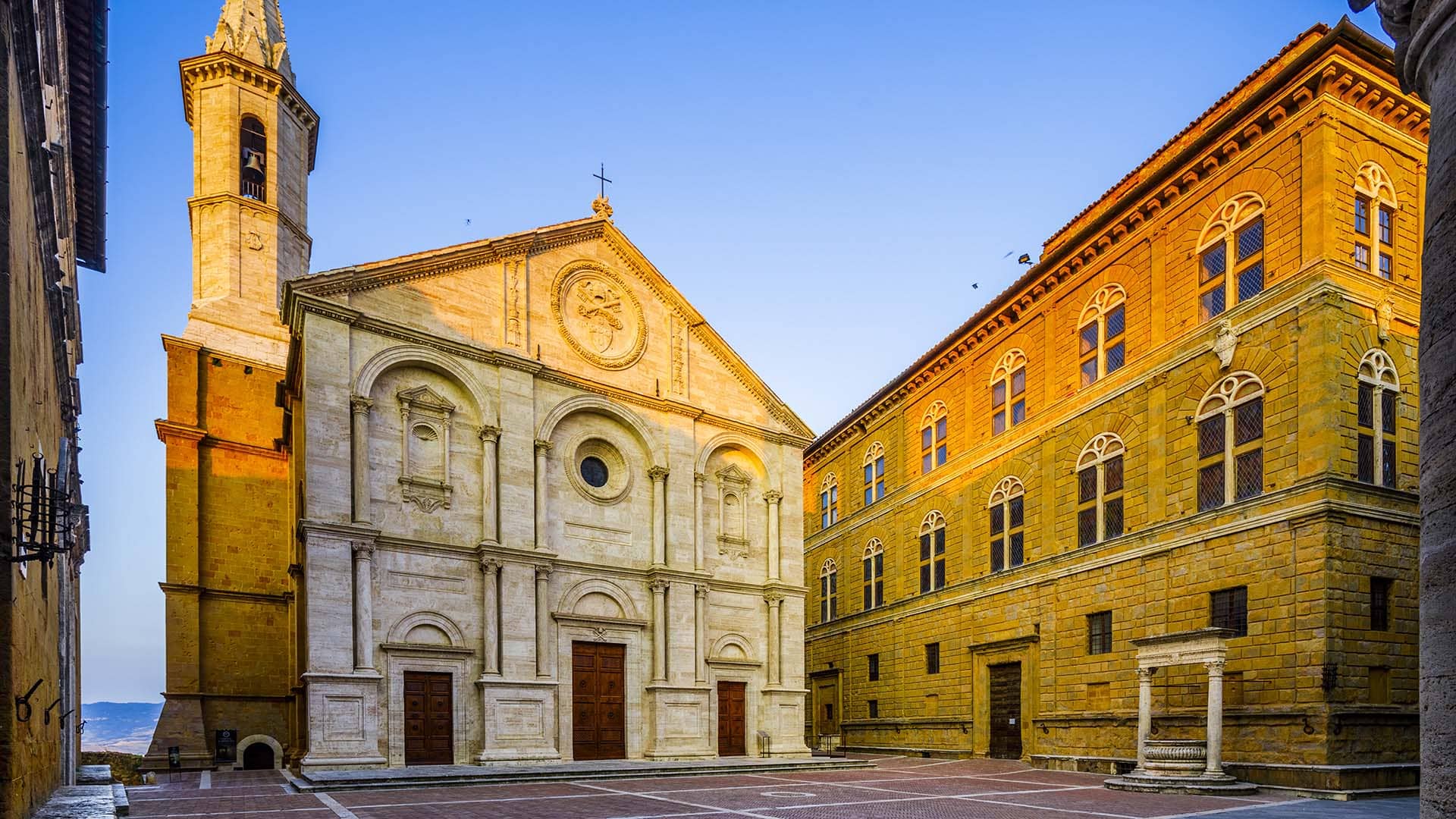
In a 15-minute walk, you will reach the beautiful Piazza Pio II, the main square of Pienza. Admire the Palazzo Piccolomini, a Renaissance palace built by Pope Pius II, and the Cathedral of Santa Maria Assunta, with its elegant facade and interior.
The cathedral was erected on the grounds of the former parish church of Santa Maria, strategically integrated into Piazza Pio II, the heart of the town. Commissioned by Pope Pius II Piccolomini and envisioned by Bernardo Rossellino, construction spanned from 1459 to 1462. The interior was adorned by prominent Sienese painters of the era, including Giovanni di Paolo, Matteo di Giovanni, and Lorenzo di Pietro. The altar is attributed to Rossellino himself.
Opening Hours: daily from 8:30 am to 1.00 pm and from 2:30 pm to 7.00 pm.
Entrance is free
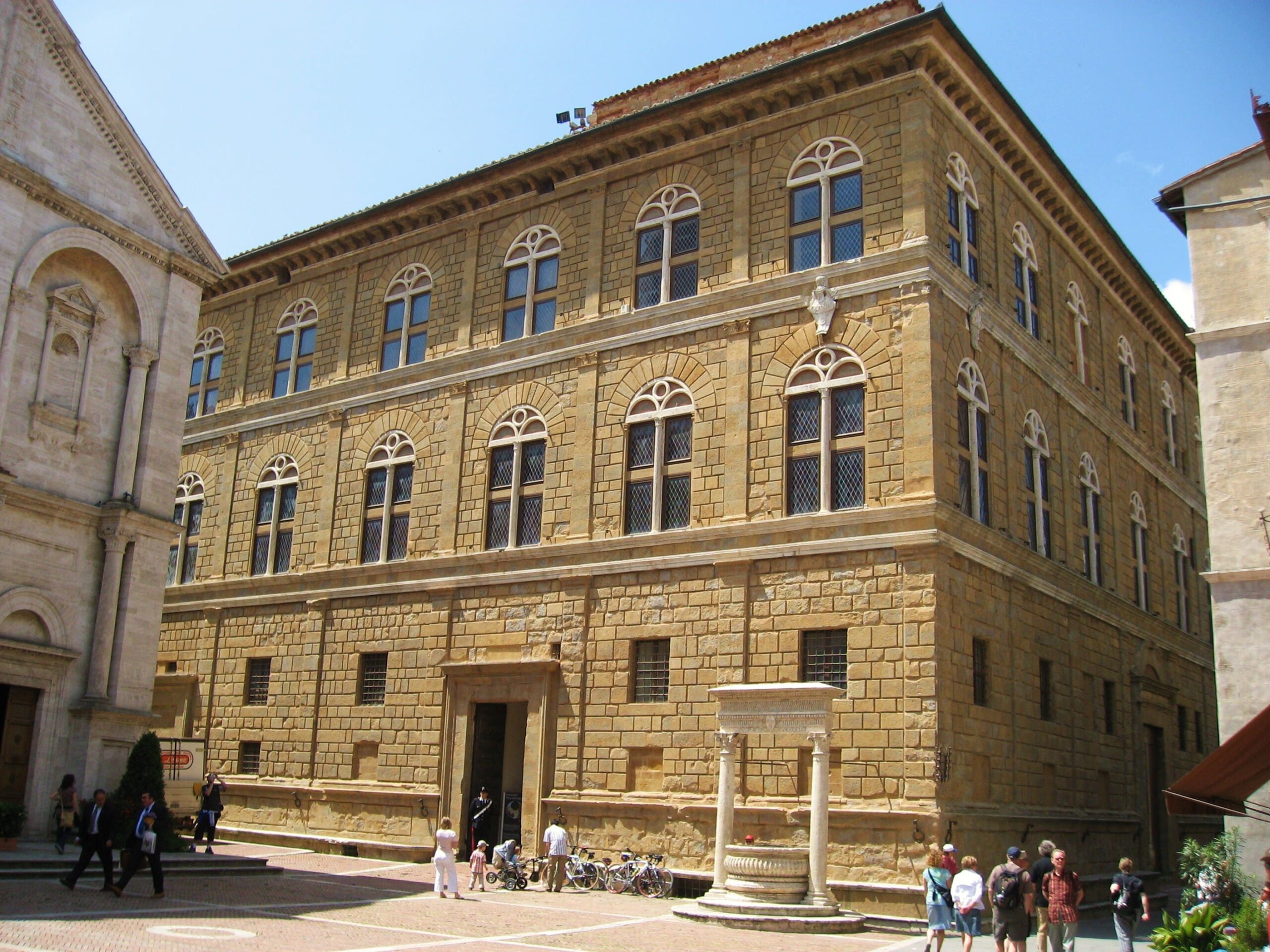
Right by the Cathedral at Piazza Pio II stands Palazzo Piccolomini, a magnificent urban palace with commanding views of the Val d’Orcia landscape. Once the residence of the Pope and his family, this noble dwelling was designed by Rossellino and built on the birthplace of Pope Pius II in 1405.

The palace’s loggia, reminiscent of an open-air theater, offers sweeping vistas of the Renaissance-style terraced garden and the breathtaking Val d’Orcia panorama. Inside Palazzo Piccolomini, visitors can explore an authentic house museum adorned with furnishings and artworks spanning from the Renaissance to the 20th century. You can buy your tickets online in advance here.
Opening Hours: from 10.00 am to 6.00 pm. There might be seasonal changes in the timetable.
Ticket Price: 12€ for adults, 8€ for students. Entrance is free for children below 6 years old.
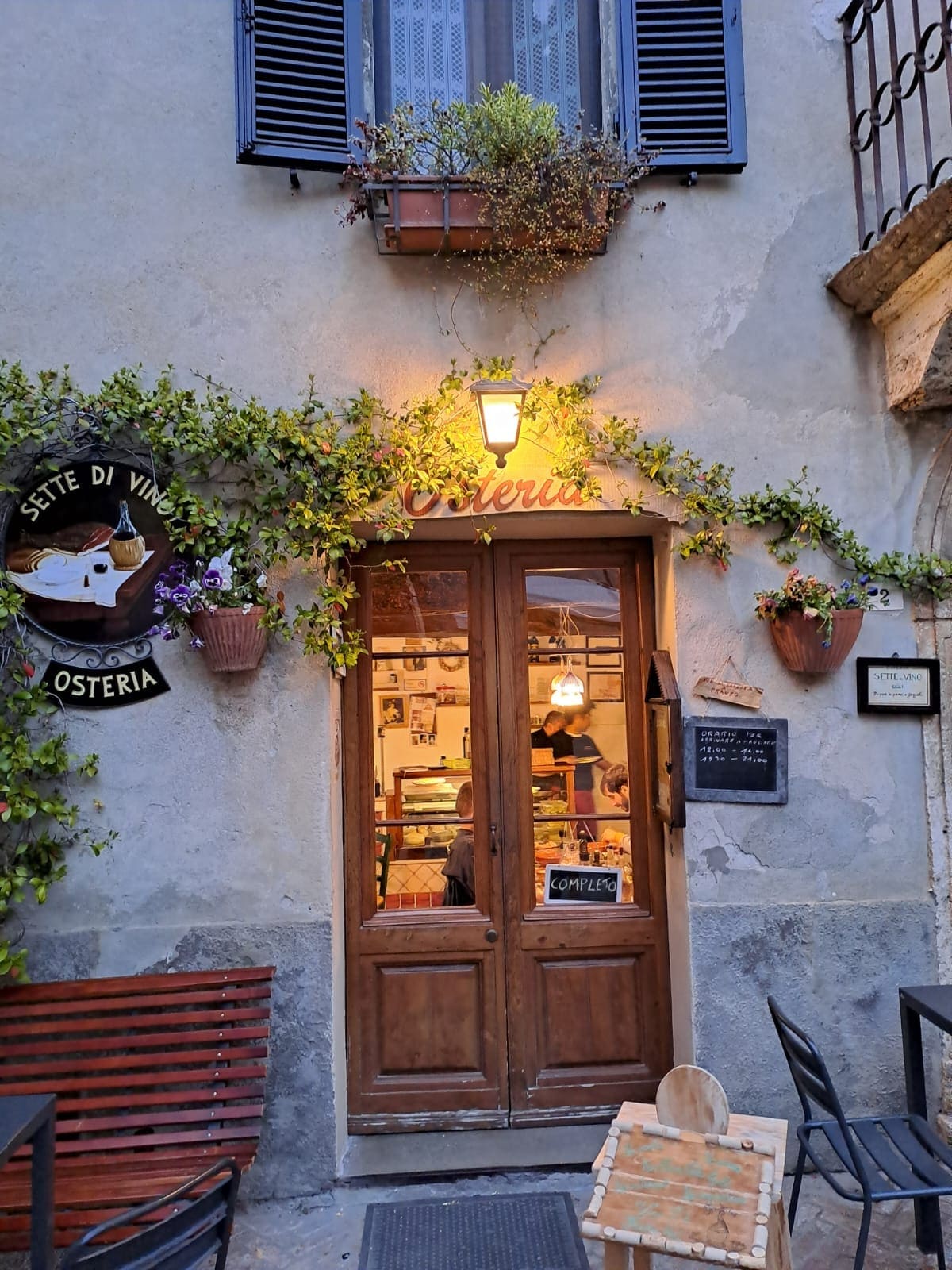
And to wrap up our visit to Pienza, we’ll head to Osteria Sette di Vino for a light dinner-aperitif. This cozy old-fashioned osteria boasts tables set up in a small square. Here, you can indulge in regional, homestyle Tuscan dishes and snacks.
Treat yourself to boards of local salami and cheeses, along with the region’s legume soup. Don’t miss out on the variety of bruschetta options available. And of course, pair your meal with a delightful glass of local red wine, such as Brunello di Montalcino or Nobile di Montepulciano.
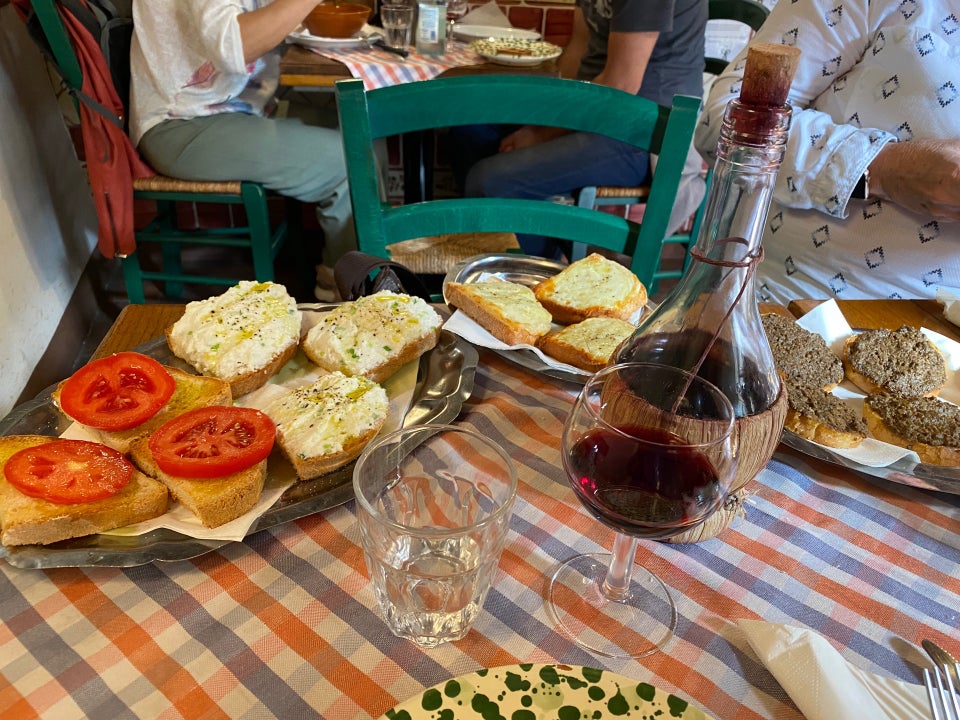
Opening Hours: from 12.00 pm to 2.00 pm and from 7.30 pm to 9.00 pm. Closed on Wednesdays.
Price Range: 20€ to 30€ per person.
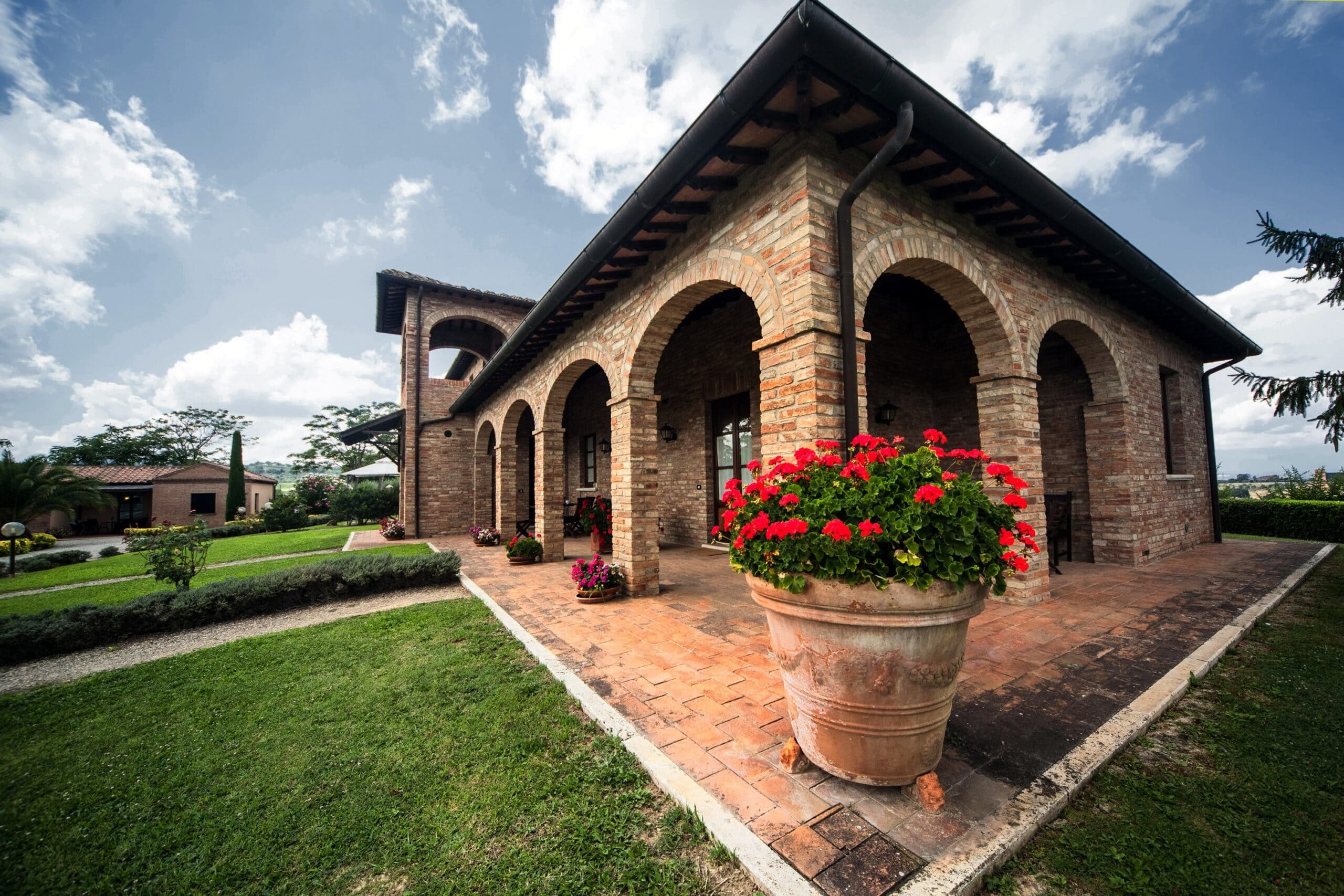
After exploring Pienza, we made our way to Montepulciano, saving it for the third day of our journey. Near the town, we found an incredible place to spend the night amidst the stunning Tuscan countryside. The place is called Agriturismo Sanguineto, situated just 4 km away from Montepulciano. It was an ideal accommodation choice for us, as we booked a spacious chalet for six people. Additionally, the property has a barbecue area.
The price starts from 135€ per night
Summary
We’ve wrapped up our second day of the Chianti Tour, and what a day it was! Montalcino and Pienza delighted us with delicious cuisine and breathtaking views of the Tuscan countryside. These two towns are absolute must-visits on any itinerary. Now, we’re off to the legendary Montepulciano. Stay tuned for the final article detailing our three-day journey through the Chianti Region. And don’t forget to check out our article on the best things to do in Siena in a day. Wishing you a fantastic trip!
While in Tuscany, be sure not to miss our guide to Florence, with advice on the best things to do!
Florence is often considered the most beautiful city in Italy, not to say the entire world. As the birthplace of the Renaissance movement, Firenze is full of monuments, churches, museums, and sights waiting to be explored. And, of course,
